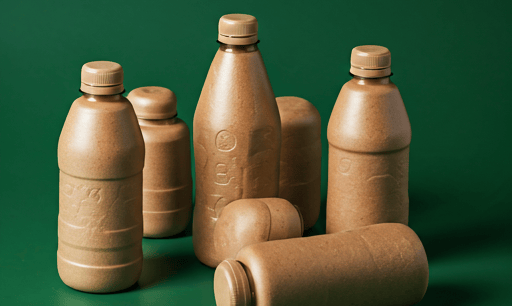Pulpex’s Innovative Molding System for Fiber-Based Packaging
BEVERAGESPACKAGINGSUSTAINABILITY


As the global demand for sustainable alternatives to traditional packaging materials intensifies, companies like Pulpex are at the forefront of innovation. Pulpex’s latest patent application introduces a new system for producing hollow molded fiber products, such as bottles and jars, using environmentally friendly materials. This technology not only addresses the pressing need to reduce glass and plastic consumption but also enhances the efficiency and quality of fiber-based products.
The Challenge in Fiber-Based Packaging
Producing molded fiber packaging presents challenges in achieving consistent structural integrity and surface finish. Traditional methods often lead to uneven fiber distribution, resulting in products with weak spots and rough textures. Furthermore, fibers can clog the passageways of molds, necessitating frequent cleaning and reducing overall efficiency.
Pulpex’s new system offers a solution by incorporating a controlled pre-filling liquid stage during the molding process. This innovation mitigates the issues of fiber clumping and uneven deposition, delivering smoother, more uniform products while streamlining manufacturing.
Key Features of the Pulpex Molding System
Pre-Filling Liquid Buffer
The patented system introduces a body of pre-filling liquid—typically water or filtered wastewater ("white water")—into the mold cavity before adding the fiber suspension. This liquid acts as a buffer, reducing the velocity of fibers as they enter the mold.Benefits:
Minimizes fiber clumping and clogging.
Enhances surface finish by promoting even fiber distribution.
Reduces the frequency of mold cleaning, improving operational efficiency.
Dynamic and Static Liquid States
Depending on the desired product characteristics, the system allows the pre-filling liquid to be in either a static or dynamic state when the fiber suspension is introduced. The level of turbulence is precisely controlled to optimize fiber deposition.Applications:
Static liquid states for smoother surfaces.
Dynamic states for improved fiber interlocking in certain designs.
Time-Based Control for Efficiency
The system’s control mechanism operates in distinct time periods:Pre-Filling Phase: The cavity is filled with the liquid.
Fiber Suspension Phase: Fibers are introduced into the cavity, impacting the liquid buffer.
Draining Phase: Excess liquid is removed, leaving behind the molded product.
Overlapping and sequencing these phases allow for faster throughput and higher quality outcomes.
Gravity-Assisted and Negative Pressure Integration
The mold’s design, often vertically oriented for products like bottles, incorporates gravity-assisted inlets and negative pressure systems. This simplifies liquid and fiber flow, accelerates liquid removal, and ensures optimal fiber distribution.Recyclable Material Compatibility
The system is designed to work with pulp fibers suspended in water, making it compatible with various recyclable and biodegradable materials. The ability to reuse filtered wastewater further enhances its environmental appeal.
Impact on Sustainable Packaging
This innovation aligns with global efforts to reduce reliance on plastics and glass. By improving the structural integrity and aesthetics of molded fiber products, Pulpex’s system makes these alternatives more viable for a broader range of applications, including food, beverages, and personal care.
Moreover, the integration of sustainable materials and waste recycling into the production process exemplifies a closed-loop approach, reducing the environmental footprint of packaging manufacturing.
About Pulpex
Established as a collaboration between Diageo, the renowned beverage company, and Pilot Lite, a venture management firm, Pulpex has introduced a patented pulp-based packaging technology that offers a viable alternative to traditional glass and plastic containers.
Pulpex's technology centers on creating bottles from sustainably sourced wood pulp, certified by the Programme for the Endorsement of Forest Certification (PEFC) and the Forest Stewardship Council (FSC). These bottles are designed to be renewable, recyclable, and biodegradable, significantly reducing environmental impact compared to conventional packaging materials. Notably, Pulpex bottles are free from plastic linings, utilizing proprietary food-grade coatings tailored to the specific contents, whether aqueous or oil-based.
Pulpex has established a global consortium of industry leaders across various consumer goods sectors to scale its technology. This consortium includes prominent companies such as Unilever, PepsiCo, and GSK Consumer Healthcare, all exploring the integration of Pulpex's paper-based bottles into their product lines.
Future Prospects
Pulpex’s patented technology has the potential to transform the packaging industry. As consumer demand for sustainable solutions grows, this advanced molding system could set new standards for efficiency and product quality in fiber-based packaging.
For more insights into sustainable packaging innovations and industry trends, subscribe to our newsletter.
